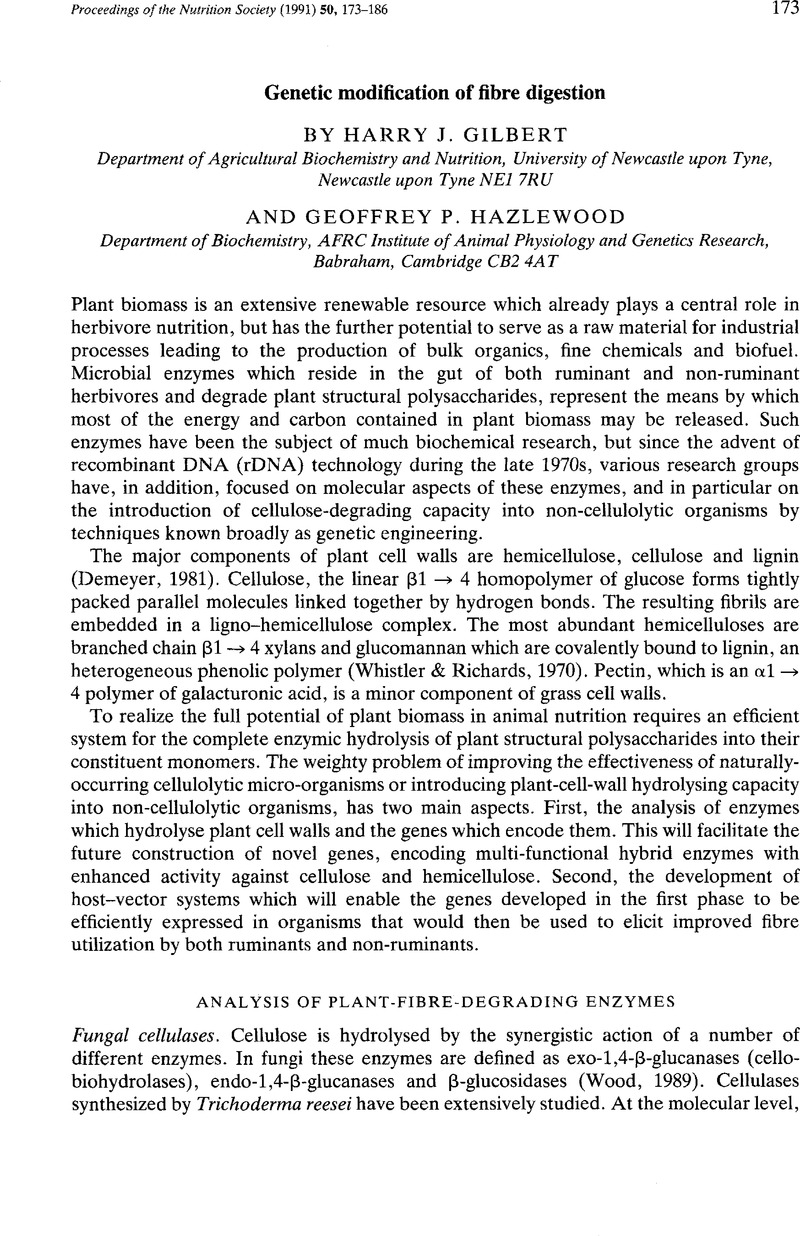Crossref Citations
This article has been cited by the following publications. This list is generated based on data provided by Crossref.
McEvoy, T.G.
Robinson, J.J.
and
Sreenan, J.M.
1992.
A role for transgenic animals in food production?.
Trends in Food Science & Technology,
Vol. 3,
Issue. ,
p.
294.
Lee, S F
Forsberg, C W
and
Gibbins, A M
1992.
Type II DNA restriction-modification system and an endonuclease from the ruminal bacterium Fibrobacter succinogenes S85.
Journal of Bacteriology,
Vol. 174,
Issue. 16,
p.
5275.
Robinson, J. J.
and
McEvoy, T. G.
1993.
Biotechnology — the possibilities.
Animal Science,
Vol. 57,
Issue. 03,
p.
335.
Hall, Judith
Ali, Simi
Surani, M. Azim
Hazlewood, Geoffrey P.
Clark, A. John
Simons, J. Paul
Hirst, Barry H.
and
Gilbert, Harry J.
1993.
Manipulation of the Repertoire of Digestive Enzymes Secreted into the Gastrointestinal Tract of Transgenic Mice.
Bio/Technology,
Vol. 11,
Issue. 3,
p.
376.
1995.
Enzyme Catalysis in Organic Synthesis.
p.
165.
Ali, Simi
Hall, Judith
Soole, Kathleen L.
Fontes, Carlos M.G.A.
Hazlewood, Geoffrey P.
Hirst, Barry H.
and
Gilbert, Harry J.
1995.
Carbohydrate Bioengineering, Proceedings of an International Conference.
Vol. 10,
Issue. ,
p.
279.
Tomme, P.
Warren, R.A.J.
and
Gilkes, N.R.
1995.
Advances in Microbial Physiology Volume 37.
Vol. 37,
Issue. ,
p.
1.
Sanders, D.A
Belyea, R.L
and
Taylor, T.A
2000.
Degradation of spent casings with commercial cellulases.
Bioresource Technology,
Vol. 71,
Issue. 2,
p.
125.
Bertoldo, Constanzo
and
Antranikian, Garabed
2002.
Enzyme Catalysis in Organic Synthesis.
p.
653.
Khandeparker, Rakhee
Verma, Preeti
Meena, Ram M.
and
Deobagkar, Deepti D.
2011.
Phylogenetic diversity of carbohydrate degrading culturable bacteria from Mandovi and Zuari estuaries, Goa, west coast of India.
Estuarine, Coastal and Shelf Science,
Vol. 95,
Issue. 4,
p.
359.
Brown Kav, Aya
Benhar, Itai
and
Mizrahi, Itzhak
2013.
Lateral Gene Transfer in Evolution.
p.
105.
Reid, R.L.
2015.
Forage Quality, Evaluation, and Utilization.
p.
1.
Abdel-Azeem, Ahmed M.
Abo Nouh, Fatma A.
Gezaf, Sara A.
Mohamed, Teroj A.
and
Darwish, Amira M.G.
2023.
Valorization of Biomass to Bioproducts.
p.
279.



